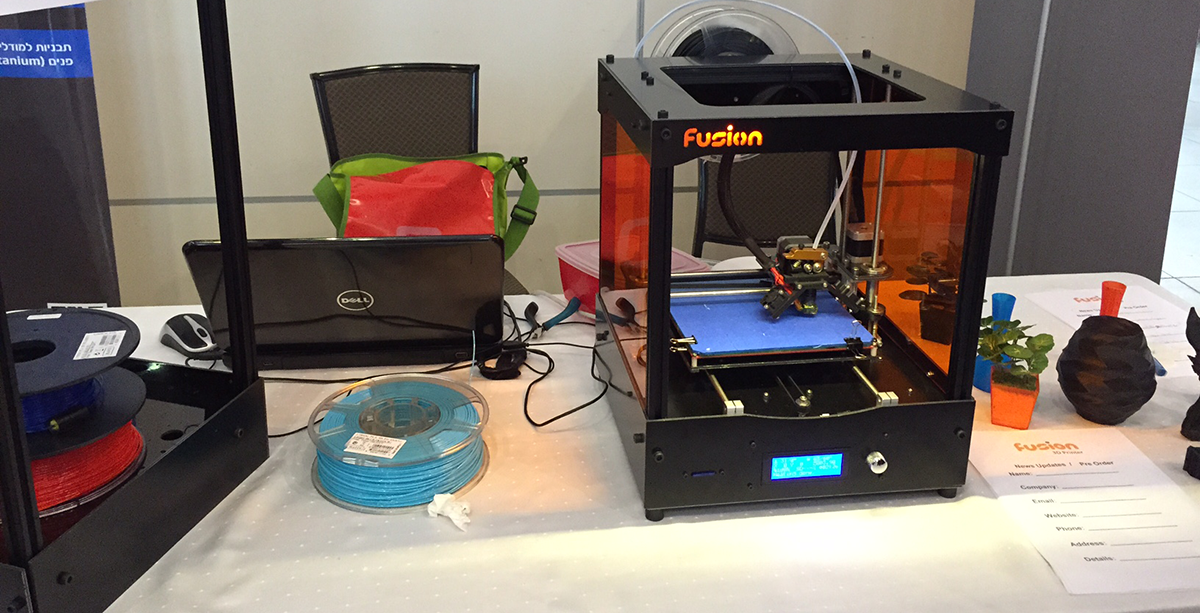Just because one of the world’s biggest 3D printing companies has its headquarters here in Israel does not mean other smaller manufacturers should not try to get into the low-cost, personal manufacturing niches. Something3D did it by offering a quadruple extruder; now a new player is entering the market by offering infinity on the Z axis.
Shachar Gafni’s Fusion 3D Printer project, which was presented at the recent 3D Printing Conference in Israel, is based on a modular system named XY∞ (which stands for XY & unlimited printing height). The idea came to him as he was faced with the desire to print something taller than his first 3D printer kit would allow. “Just like in many aspects of life, we sometimes need extra space in a car, or more storage room,” Gafni explains. “We are now introducing a new concept where you begin with a basic but generous printing volume of 200X200X200 mm and can later choose to expand the Z axis with an affordable extension kit that will take just 10 minutes to assemble.”
The extension kit will not be limited in height, with the possibility to take the 3D prints as high as one, two or even three meters. “We are currently testing a 1 meter high extension kit – said Gafni – we simply used a standard wall mount bracket to stabilize the printer and it works just fine,” he adds, while conceding that it is not yet clear what the added height capabilities will be used for.
“In fact not enough models exist for download today that can leverage our unique printing volume. We are curious about how our future customers will use that new creative possibility,” he said. Neverthless, Gafni is sure that a 40, 60 or even 90 cm printing height priced below $1,000 will be welcomed by the market. The Fusion 3D XY∞ will be available as a basic model (with a heated bed, LCD control panel, aluminum case and other features) priced at around $700, while still maintaining an open platform for consumables.
The real “fusion” will be in its modular structure. Gafni believes (and he is not alone) that 3D printers are in a stage for their evolution similar to that of the early PC’s, which offered a high level of modularity and self assembly. “We plan to provide upgrades and extensions to our future customers so that the Fusion 3D printer you buy today will not just get old in a year of two and you will be able to update the electronics, the print head, and, in our unique case, extend the print volume as well.
Fusion 3D has already attracted the attention of many local Israeli 3D printer retailers who are currently importing their systems from abroad — from China, Europe and the US. The company will not turn to Kickstarter but will try to gradually and organically build its business. Starting with the January 2015 scheduled launch.



